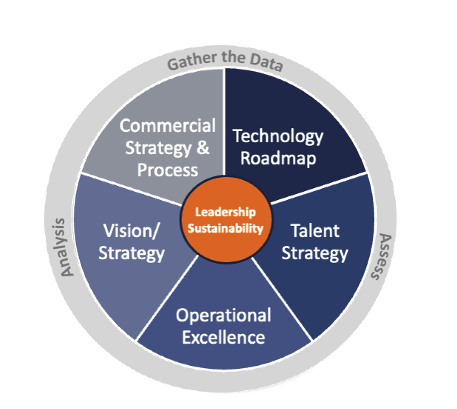Are you Prepared to Hunker Down?
Insights and Strategies for Manufacturing Challenges
This is article is part of a series of monthly articles produced by Harbour Results for PMA’s MetalForming Business Edge e-newsletter. Click here to view the full collection of articles.
This year has been challenging for everyone in manufacturing. In fact, our latest Manufacturing Pulse Study, conducted in September, saw the Harbour IQ Manufacturing Index at 58 (50 being neutral), a decrease for the third consecutive quarter, which indicates the North American manufacturing industry is still contracting. Additionally, sentiment has dipped to its lowest point since the start of the COVID pandemic. That said, when study respondents look forward to 2024, they are expecting to increase revenue 2.6% on average and 54% expect profits to increase – signally some optimism for the future.
What the past several years have taught us is uncertainty has become the norm and businesses need to expect the unexpected. To be successful, manufacturers need to to hunker down to help de-risk their business.
What do we mean by “hunker down”?
First, you need to evaluate your business and determine what type of company you are:
Fixable – Stumbling a bit, open to help, and with a solid plan your business can improve.
Sustainable – Strong, top performer looking to sustain business and profitably growth.
Must Improve – Average and must seek help to improve business and stay viable.
Oh Crap – Out of options, waited too long to ask for help and now forced to exit the industry.
Once you understand where you sit on the manufacturing business spectrum you need to create a customized plan of action on how you will better position your business for the future. Regardless of your path it is important to be focused on the things you control, as well as continuous improvement across your organization. To take your company to the next level you need to consider how to address each area of the Transformation Wheel – Vision/Strategy; Operational Excellence; Talent Strategy; Technology Roadmap; Commercial Strategy & Process and Leadership Sustainability.
To build this plan we recommend starting with cash – cash is always king. Be diligent and regularly conduct a line-item review of your income statement to identify and eliminate waste. Additionally, be diligent with collecting cash and passing on price increases. Inflation, increased cost of raw materials and talent must be accounted for in your business, and you need to have conversations with your customers to insure you are able to hold on to your margins. Look at every aspect of your business’ finances with the intent to drive cash flow.
Next, look at your operations. It is your largest opportunity to drive improvement. You need to use your data to identify gaps and then work systematically to eliminate waste in all aspects of operations – not just in production, but in material handling, secondary operations, shipping and receiving. You must plan, do, check and adjust as needed to optimize your performance. After all that, train your team on the improvements.
Finally, leadership is critically important through all of this. Leaders need to be edgy. They need to be accountable. They need to drive improvement and ask for help before it is too late. The key to success is velocity and speed of decision making. Too many companies get stuck in analysis and are afraid to act. The reality is, if you swing at 10 pitches and only hit 5 balls, you are still batting .500, which is better than if you never swing the bat.
We can’t predict what the next boom or bust event will be for manufacturing. But, we can tell you, with certainty, the cycle will continue and it is up to you to hunker down and prepare your business for whatever comes your way.



